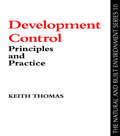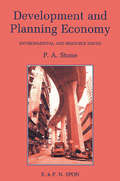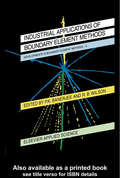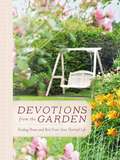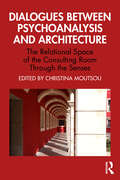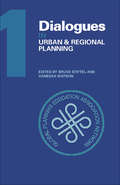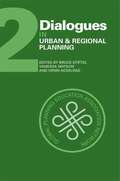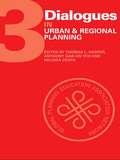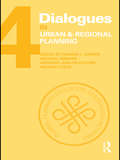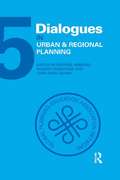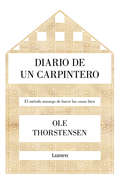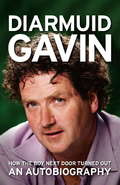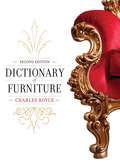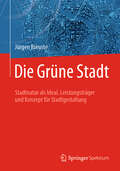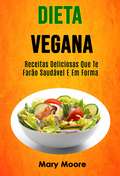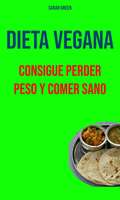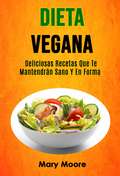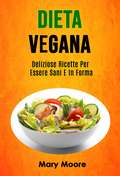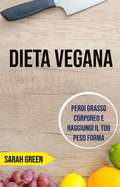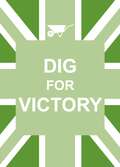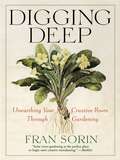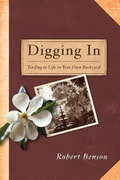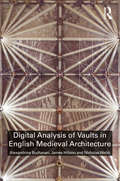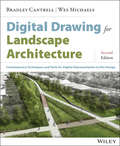- Table View
- List View
Development Control (Natural and Built Environment Series #Vol. 11)
by Keith ThomasDevelopment Control" is a comprehensive introductory text for students of planning and related subjects. Drawing widely on the literature - the approach and treatment are very much geared to the needs of students on courses, rather than focusing on practical and "how-to-do-it" issues. It should be of interest to students in schools of planning, the built environment, estate management, land economy and other related subjects.
Development and Planning Economy: Environmental and resource issues
by P.A. StoneThis book describes in detail how the property market operates, giving a clear picture of the economics of development and the way which development issues are defined by (and in their turn have an effect on) community and individual needs. By describing how the market works and explaining the factors which need to be analysed, the author aims to improve decision-making techniques and machinery.
Developments in Boundary Element Methods: Industrial applications
by P. K. Banerjee R. B. WilsonNine detailed survey chapters by different authors present a number of applications of BEMs.
Devotions from the Garden: Finding Peace and Rest in Your Busy Life (Devotions from . . .)
by Miriam DrennanCome to the garden alone, and fill your soul with His presence.There's nothing on earth like the peace and loveliness of a magnificent garden. It's the place where Adam and Eve first fellowshipped with God, and where you, too, can escape from this chaotic world into His loving arms of beauty and serenity.Devotions from the Garden takes you to that place where senses are restored as dewdrops settle and butterflies gather to witness the miracles of God's creation bloom and grow. These ninety devotions explore the parallels of life with the elements of the garden to help you see God, to sense His presence, to soothe your soul, and to rest in knowing He is with you throughout each day. Included are striking photographs with a fresh, contemporary design for timeless appeal.Trim Size: 6 x 8
Dialogues between Psychoanalysis and Architecture: The Relational Space of the Consulting Room Through the Senses
by Christina MoutsouDialogues between Psychoanalysis and Architecture explores the multisensory space of therapy, real or virtual, and how important it is in providing the container for the therapeutic relationship and process. This book is highly original in bringing psychoanalysis and architecture together and highlighting how both disciplines strive to achieve transformation of our psychic space. It brings together contributions that comprise three parts: the first explores the space of the consulting room through the senses to examine issues such as smell and its link with memory and belonging, hearing out the Other, the psychoanalytic couch, the medical therapy room and the so-called sixth sense; secondly, the book questions how the consulting room can represent or be redesigned to reflect the philosophy that underlies the therapy process, foregrounding an architectural point of view; and thirdly, the book attends to the significance of the consulting room as a virtual space, as it emerged during the pandemic of COVID-19 and beyond. Architectural, psychotherapeutic and interdisciplinary perspectives allow for an important new dimension on the psychological use of space, and will appeal to psychoanalysts, psychoanalytic and integrative psychotherapists, art therapists, students of psychotherapy, as well as architects and designers.
Dialogues in Urban and Regional Planning: Volume 1
by Vanessa Watson Bruce StiftelDialogues in Urban and Regional Planning offers a selection of the best urban planning scholarship from each of the world's planning school associations. The award-winning papers presented illustrate the concerns and the discourse of planning scholarship communities and provide a glimpse into planning theory and practice by planning academics around the world. All those with an interest in urban and regional planning will find this collection valuable in opening new avenues for research and debate.This book is published in association with the Global Planning Education Association Network (GPEAN), and the nine planning school associations it represents, who have selected these papers based on regional competitions.
Dialogues in Urban and Regional Planning: Volume 2
by Vanessa Watson Bruce Stiftel Henri AcselradDialogues in Urban and Regional Planning offers a new selection of the best urban planning scholarship from each of the world's planning school associations. The award winning papers presented illustrate the concerns and the discourse of planning scholarship communities and provide a glimpse into planning theory and practice by planning academics around the world. All those with an interest in urban and regional planning will find this collection valuable in opening new avenues for research and debate.This book is published in association with the Global Planning Education Association Network (GPEAN), and the nine planning school associations it represents, who have selected these papers based on regional competitions.
Dialogues in Urban and Regional Planning: Volume 3
by Thomas Harper Heloisa Costa Anthony Gar-On YehThis is the third book in the series offering a new selection of the best urban planning scholarship from each of the world's planning school associations. The award winning papers presented illustrate the concerns and the discourse of planning scholarship communities and provide a glimpse into planning theory and practice by planning academics around the world. All those with an interest in urban and regional planning will find this collection valuable in opening new avenues for research and debate.
Dialogues in Urban and Regional Planning: Volume 4
by Thomas L. HarperDialogues in Urban and Regional Planning, Volume 4 is a selection of some of the best scholarship in urban and regional planning from around the world. The internationally recognized authors of these award-winning papers take up a range of salient issues from the theory and practice of planning. The topics they address include planning and governance in Zimbabwe, rebuilding after Hurricane Katrina, safety issues in urban spaces, and an analysis of French transportation policies. The breadth of the topics covered in this book will appeal to all those with an interest in urban and regional planning, providing a springboard for further debate and research. The papers focus particularly on how planning institutions can meet contemporary environmental, demographic, economic, and socio-spatial challenges. The Dialogues books are published in association with the Global Planning Education Association Network (GPEAN) and its member planning schools associations. These associations represent 360 planning schools in nearly fifty countries around the globe. They have selected these papers based on regional competitions.
Dialogues in Urban and Regional Planning: Volume 5
by Robert Freestone Michael Hibbard Tore Øivin SagerDialogues in Urban and Regional Planning 5 is a selection of some of the best scholarship in urban and regional planning from around the world. The internationally recognized authors of these award-winning papers take up a range of salient issues from the theory and practice of planning. The topics they address include the effects of globalization on world cities, metropolitan planning in France and Australia, and new research in pedestrian and traffic design. The breadth of the topics covered in this book will appeal to all those with an interest in urban and regional planning, providing a springboard for further debate and research. The papers focus particularly on themes of inclusion, urban transformation, metropolitan planning, and urban design. The Dialogues in Urban and Regional Planning (DURP) book series is published in association with the Global Planning Education Association Network (GPEAN) and its member national and transnational planning schools associations.
Diario de un carpintero: El método noruego de hacer las cosas bien
by Ole ThorstensenTras el éxito de El libro de la madera, llega un nuevo descubrimiento nórdico; aclamado y publicado por Karl Ove Knausgård: «Un tributo poético y enriquecedor al trabajo manual.» Traducido en 16 países. Diario de un carpintero es una historia sencilla y cautivadora a la vez sobre la rehabilitación de un loft, desde el momento en el que el maestro carpintero Ole Thorstensen entrega un presupuesto hasta que la casa está lista para ser ocupada. A medida que el proyecto evoluciona, vemos el proceso de construcción a través de los ojos de Thorstensen: los meticulosos detalles, el proceso de solucionar problemas, la paciencia y el trabajo en equipo necesario para llevarlo todo a cabo y, sobre todo, el complejo y fructífero diálogo con los clientes que le encomendaron el trabajo. Thorstensen aborda mucho más que los delicados aspectos prácticos de su oficio. Su pasión y experiencia de treinta años lo llevan hasta profundas reflexiones sobre la naturaleza del trabajo manual, los oficios y la vida misma. Diario de un carpintero es una fuente de inspiración para todo tipo de reformas y proyectos, una oda al trabajo bien hecho que transmite la felicidad de ver cómo va tomando forma. La crítica ha dicho...«Un tributo poético y enriquecedor al trabajo manual y al arte que este contiene. Ole Thorstensen escribe sobre los valores que el trabajo artesanal aporta a nuestra sociedad, y su Diario de un carpintero es un oportuno recordatorio de que no podemos consentir perderlos.»Karl Ove Knausgård «Un autor novel que lleva casi treinta años trabajando de carpintero y cuyas manos son su currículum vitae. Sus memorias, Diario de un carpintero, son una oda a todo lo que han hecho.»The Economist «Un humilde pero noble tributo al valor del trabajo honesto, un relato auténtico y absorbente de un maestro carpintero noruego sobre su oficio lleno de verdades puras sobre cómo seguir su propio camino.»Booklist «Un libro absolutamente adorable.»Asahi Newspaper (Japón) «Una agradable incursión en el mundo del artesano llena de una poesía y una dignidad muy verdaderas.»Berlingske «Revelador. [...] El resultado es una buena mezcla de sociología y filosofía, por no hablar de la ética.»Klassekampen «Un libro sólido como el oficio que describe.»Dagbladet «Ole Thorstensen escribe de una forma convincente acerca del trabajo duro como algo honorable, sin caer en ideas románticas.»Bokmagasinet
Diarmuid Gavin: An Autobiography
by Diarmuid GavinHis work has long been recognised for its innovation and his reputation for clashes with the so-called gardening 'establishment' are famous. He has won many accolades including Silver Gilt at Chelsea Flower Show, however, arguably his biggest achievement was to popularize gardening through the medium of television and move it away from the exclusive and stultifying atmosphere of a private club. This is Diarmuid's characteristically open and honest account of his chaotic, inspired and infuriating (to himself and others) road to success.
Dictionary of Furniture
by Charles Boyce Joseph T. ButlerIn a comprehensive listing of entries from "Aalto, Hugo Alvar Henrik" to "Zui Weng Yi," Boyce illuminates readers about furniture styles, construction details, terminology, furniture designers, and design movements throughout history and throughout the world. Styles covered include European-inspired classical, baroque, pop, rococo, and modernist. This extensive guide will be helpful for furniture enthusiasts, historians, and those interested in redecorating their homes.
Die Grüne Stadt: Stadtnatur als Ideal, Leistungsträger und Konzept für Stadtgestaltung
by Jürgen BreusteDieses Lehrbuch zur Grünen Stadt untersucht Stadtnatur als Ideal, Leistungsträger und Konzept für Stadtgestaltung. Es beantwortet wichtige aktuelle Fragen, die sich zu den ökologischen und kulturellen Grundlagen, zur Entwicklung und Struktur und zum ökologischen Leistungsvermögen von Stadtnatur weltweit stellen. Das Buch erklärt, was Stadtnatur ist, wie sie entstand und wie sie sich im Kontext zu den natürlichen und kulturellen Bedingungen ihrer Standorte entwickelte. Zudem wird beschrieben, was urbane Biodiversität ausmacht und welche Rolle differenzierte Stadtnatur im Konzept der Grünen Stadt einnimmt. Theorien der Stadtentwicklung und Ökologie werden mit praktischen Anwendungen der Stadtplanung verbunden und mit vielen Fallstudien und Beispielen veranschaulicht. Die großen Potenziale von Stadtnatur werden im Detail aufgezeigt. Um Probleme in der Stadt zu bewältigen oder zu mildern, bedarf es eines zielgerichteten, an die besonderen Bedingungen der verschiedenen Stadtnatur-Arten angepassten Stadtnatur-Managements, das Naturschutz wie Naturgestaltung gleichermaßen einschließt und dabei immer den Bezug zu den Stadtbewohnern im Auge behält.Das Lehrbuch spricht besonders Studierende und Lehrende der Fächer Stadtplanung, Ökologie, Geographie, Sozialwissenschaften sowie Praktiker der Stadtgestaltung an.
Dieta Vegana - Receitas Deliciosas Que Te Farão Saudável E Em Forma
by Mary MooreSe você quer saber como construir músculos e queimar gordura comendo deliciosas refeições vegetarianas e veganas que são fáceis de cozinhar e fáceis de comprar, então você quer ler este livro. Você se preocupa que construir músculos ou perder gordura seja muito difícil como vegetariano ou vegano? Você não tem certeza de como preparar alimentos que não sejam apenas deliciosos e saudáveis, mas também eficazes para ajudar você a construir músculos e perder gordura.
Dieta Vegana : Consigue Perder Peso Y Comer Sano
by Sarah GreenEste libro contiene pasos y estrategias para encontrar recetas veganas que se adapten a cada persona. En este libro se analiza detalladamente el estilo de vida vegano. No hay que aguantar el seguir comiendo alimentos blandos o desagradables. Este libro está enfocado en que las personas veganas aprendan a preparar deliciosos platos ricos en nutrientes necesarios para llevar una vida saludable. Una comida equilibrada puede conseguirse si pones en marcha las recetas que se dan en este lirbo. Hacerse vegano a muchas personas les parece algo muy complicado de conseguir. Dejar de lado tus comidas favotiras que contengan carne o dejar el azúcar refinado no suena sencillo, Sin embargo, las recetas que se dan en este libto prueban que el mito no es cierto. Podrás disfrutar de un desayuno, cena e incluso postre delicioso y sabroso mientras mantienes una dieta vegana. Si quieres perder peso, sentirte enérgico y vivir una vida más sana, necesitas cambiar tu dieta y comenzar a comer más saludable diariamente y no un arreglo rápido de un problema de peso. Esto es de lo que se trata ser vegano, es una forma de vida. Si quieres hacerte vegano y no estás muy segura de lo que conlleva, que comer, que evitar u que recetas increíbles puedes preparar, entonces este es tu libro.
Dieta Vegana: Deliciosas Recetas Que Te Mantendrán Sano Y En Forma
by Mary MooreSi quieres saber cómo desarrollar músculos y quemas grasas comiendo deliciosos platos vegetarianos y veganos que son fáciles y baratos de hacer, este es tu libro. ¿Te preocupa que desarrollar músculos o quemar grasas sea demasiado difícil siendo vegetariano o vegano? ¿No estás seguro de saber preparar comidas que, además de deliciosas y sanas, sean también efectivas para desarrollar músculos y quemar grasas? El veganismo es una ideología basada en la premisa de que todas las criaturas vivas, incluidos los animales, deben ser respetadas, por lo que el asesinato y consumo de animales o de ingredientes de origen animal contradice esta premisa. Existen algunos mitos que pueden hacerte escéptico a la hora de adoptar una dieta vegana. Sin embargo, no tienes de qué preocuparte, ya que en este libro se desmontan algunos de esos mitos, especialmente el de que una dieta vegana no proporciona las proteínas necesarias. Además, aprenderás qué comidas veganas son ricas en proteína y tendrás acceso a numerosas recetas veganas ricas en proteínas. ¡Si estás listo para pasar a la acción y cambiar tu vida a mejor, este libro te guiará en la dirección adecuada!
Dieta Vegana: Deliziose Ricette Per Essere Sani E In Forma
by Mary MooreSe vuoi sapere come avere un bel corpo e bruciare i grassi mangiando deliziosi piatti vegetariani e vegani che siano facili da cucinare e che non pesino sul tuo portafogli, allora non puoi perderti questo libro. Pensi che costruire muscoli o perdere grasso sia troppo difficile da vegetariano o vegano? Questo libro ti aiuterà a preparare del cibo non solo delizioso e sano, ma anche efficace nell'aiutare a costruire i muscoli e perdere peso. Il veganismo è un'ideologia basata sulla premessa che tutte le creature viventi, compresi gli animali, dovrebbero essere rispettate, e che l'uccisione e il consumo di animali e ingredienti di origine animale violano questa premessa. Alcuni falsi miti possono renderti molto scettico nell'adottare la dieta vegana; tuttavia, non devi preoccuparti di ciò in quanto questo libro ha ridimensionato alcuni dei miti che circondano la dieta vegana, in particolare la falsa credenza che le diete vegane non forniscano proteine adeguate. Inoltre, grazie a questo libro imparerai quali sono i cibi vegan ricchi di proteine e avrai accesso a un numero di ricette vegane ricche di proteine che potrai provare da subito. Se sei pronto per agire e cambiare la tua vita in meglio, questo libro ti guiderà sicuramente nella giusta direzione!
Dieta Vegana: Perdi Grasso Corporeo E Raggiungi Il Tuo Peso Forma
by Sarah GreenQuesto libro contiene passi e strategie comprovati su come trovare le giuste ricette vegane a seconda delle esigenze della persona. Lo stile di vita vegano è spiegato dettagliatamente in questa guida. Non c'è più bisogno di sopportare di mangiare cibo insipido e disgustoso. Questo libro insegnerà ai vegani come cucinare pasti deliziosi con tutti i nutrienti necessari per uno stile di vita più sano. Un piano alimentare equilibrato può essere fatto usando le ricette fornite in questo libro. Diventare vegani può sembrare una prospettiva scoraggiante per molte persone. Rinunciare ai tuoi cibi preferiti che contengono carne, latticini e zuccheri raffinati suona come se non fosse facile. Tuttavia, le ricette che troverai in questo libro dimostreranno che questo mito è sbagliato. Puoi gustare la colazione, il pranzo, la cena e anche il dessert che è ricco, delizioso e saporito anche quando fai la dieta vegana. Se si desidera perdere peso, sentirsi energici e vivere una vita sana, è necessario modificare la dieta e iniziare a mangiare sano come stile di vita e non una soluzione rapida per i problemi di peso. Questo è ciò che significa essere vegani; è uno stile di vita. Se vuoi essere un vegano e non sei abbastanza sicuro di ciò che comporta, cosa mangiare, i cibi da evitare e alcune ricette incredibili che puoi preparare (oltre ai fagioli), allora questo è il libro che fa per te.
Dig For Victory
by Summersdale PublishersThe World War Two slogan is still pertinent in these thrifty times as more people than ever are turning to self-sufficiency and growing their own fruit and vegetables. This little compendium is packed with tips and hints on how to make the most of your garden along with witty quotations to help you dig for victory.
Dig For Victory
by Summersdale PublishersThe World War Two slogan is still pertinent in these thrifty times as more people than ever are turning to self-sufficiency and growing their own fruit and vegetables. This little compendium is packed with tips and hints on how to make the most of your garden along with witty quotations to help you dig for victory.
Digging Deep
by Fran SorinBy tuning in to the processes of the natural world, millions have discovered that gardening acts as a conduit for experiencing creativitynot just in the garden, but in life. Now, gardening expert Fran Sorin offers this prescriptive and motivational book to teach readers to use gardening as a tool for exploring creativity in all areas of life. With evocative illustrations and a series of eye-opening, inspirational exercises, DIGGING DEEP encourages gardeners of all levels to enjoy their gardens more deeply while setting their creative selves free.
Digging In: Tending to Life in Your Own Backyard
by Robert BensonThe story of a small garden large enough to hold everything in life that really matters. “These days the portion of Eden for which I am responsible is fairly modest. . . . It is a small house in a small garden in a small neighborhood. But it is large enough . . . Large enough to hold everything dear. ” Digging Intells the story of the author’s move into an early twentieth-century cottage with a long abandoned back yard, and the work that he and his family had to do to bring a garden to life there. It is the story of the way that the garden became the ground upon which deeper relationships with his family, friends, and neighbors began to blossom and grow. Written in the gentle, revealing prose for which Benson is acclaimed, this is a lyrical and wise book, beautifully evoking the wonder of planting and seasons, humorously recalling the challenges and the struggles of the labor itself, and carefully observing the simple truths and timeless joys that were there to be found. From the Trade Paperback edition.
Digital Analysis of Vaults in English Medieval Architecture
by Nicholas Webb Alexandrina Buchanan James HillsonMedieval churches are one of the most remarkable creative and technical achievements in architectural history. The complex vaults spanning their vast interiors have fascinated both visitors and worshippers alike for over 900 years, prompting many to ask: ‘How did they do that?’ Yet very few original texts or drawings survive to explain the processes behind their design or construction. This book presents a ground-breaking new approach for analysing medieval vaulting using advanced digital technologies. Focusing on the intricately patterned rib vaulting of thirteenth and fourteenth century England, the authors re-examine a series of key sites within the history of Romanesque and Gothic Architecture, using extensive digital surveys to examine the geometries of the vaults and provide new insights into the design and construction practices of medieval masons. From the simple surfaces of eleventh-century groin vaults to the gravity-defying pendant vaults of the sixteenth century, they explore a wide range of questions including: How were medieval vaults conceived and constructed? How were ideas transferred between sites? What factors led to innovations? How can digital methods be used to enhance our understanding of medieval architectural design? Featuring over 200 high quality illustrations that bring the material and the methods used to life, Digital Analysis of Vaults in English Medieval Architecture is ideal reading for students, researchers and anyone with an interest in medieval architecture, construction history, architectural history and design, medieval geometry or digital heritage.
Digital Drawing for Landscape Architecture
by Bradley Cantrell Wes MichaelsDigital Drawing for Landscape Architecture won the "Award of Excellence" from the 2012 Professional Awards and Student Awards by the American Society of Landscape Architects (ASLA). For a hundred years, pencil, pen, markers, and watercolor have been the principal tools of representation for landscape architects and urban planners. Today, those hand-powered aids have been replaced by computers and Computer-aided design (CAD). Digital Drawing for Landscape Architects bridges the gap between the traditional analog and the new digital tools and shows you how to apply timeless concepts of representation to enhance your design work in digital media. Building on the tried-and-true principles of analog representation, Digital Drawing for Landscape Architecture explores specific techniques for creating landscape design digitally. It explains the similarities and differences between analog and digital rendering, and then walks you through the steps of creating digitally rendered plans, perspectives, and diagrams. You'll explore: Computing Basics Raster and vector images Setting up the document Base imagery and scaling Hand-drawn linework and diagrams Text, leaders, and page layout Color, shading, and textures Creating a section elevation Perspective drawing Techniques for using the newest versions of Adobe Illustrator, Photoshop, and Acrobat as well as older versions With more than 500 full-color drawings and photographs alongside proven techniques, Digital Drawing for Landscape Architects will help you enhance your skills though a unique marriage of contemporary methods with traditional rendering techniques.
